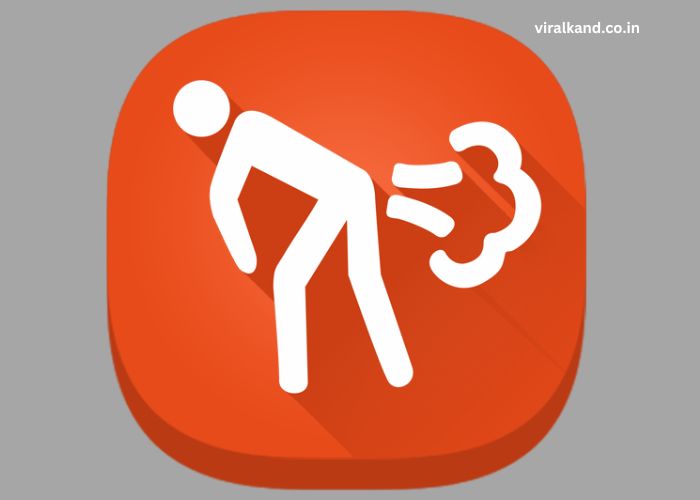When we think of funny sound effects, one of the first things that comes to mind is the iconic fart noise. The unmistakable “pffffft” sound can instantly make any situation lighter and funnier. Among the many humorous sound effects that exist, Kusu sound has risen to prominence as one of the funniest, often associated with various fart noises and comedic effects.
In this blog post, we will dive deep into the world of Kusu sound, exploring how it has become a popular and cherished source of laughter for many. From practical jokes to casual conversations, funny sound effects like Kusu sound add a layer of hilarity to everyday life.
Before we start, here are three key points that summarize what we’ll cover in this blog:
- The history and origin of Kusu sound and its association with funny effects.
- The best ways to use funny fart noises for maximum effect.
- A collection of popular Kusu sound types that you can enjoy.
What Is Kusu Sound and Why Is It So Funny?
Kusu sound refers to the humorous, exaggerated fart noises that can be heard in various media, from cartoons to social media clips. The term “Kusu” is often used to describe the variety of silly and loud fart noises that people find funny. These sounds, while simple, can create an immense impact when it comes to humor. The comedic value of a fart sound lies in its surprise element and its ability to break tension in awkward situations.
These sounds are often used in cartoons, movies, and online videos to add a bit of slapstick humor. The Kusu sound can range from short squeaks to long, drawn-out sounds that leave listeners in stitches. Whether it’s a quick “pfffft” or a resonating “brraaaap,” these noises have an uncanny way of drawing laughs. For example, animated characters in sitcoms or cartoons like The Simpsons and SpongeBob SquarePants often use fart sounds as a go-to source of humor for younger audiences.
How Is Kusu Sound Used in Media and Pop Culture?
The Kusu sound has become an integral part of media and pop culture over the years. From sitcoms to viral internet videos, these funny sound effects are used to add humor to any situation. The use of fart noises in cartoons is one of the most well-known applications of Kusu sound. Shows like Tom and Jerry, The Simpsons, and South Park feature fart noises during scenes of chaos or slapstick humor. These shows have mastered the art of timing, ensuring that the Kusu sound makes the moment both unexpected and hilarious.
For example, in the Tom and Jerry cartoons, the use of a fart sound during a chase scene can completely transform the atmosphere, turning a typical conflict into an absurd and funny moment. Similarly, internet culture has embraced the Kusu sound, with memes and funny sound effects making the rounds on platforms like TikTok, YouTube, and Instagram.
The Science Behind Why Fart Noises Make Us Laugh
It may seem strange that something as simple as farting could make us laugh, but there’s a science behind it. The sound of farting is often associated with an unexpected bodily function, and laughter generally arises from surprise, incongruity, and relief. In the case of Kusu sound, the surprise element is key.
When a fart noise happens unexpectedly, especially in a quiet or tense environment, the absurdity of it often triggers laughter. It’s also a shared experience, as almost everyone has experienced a fart at some point, making it universally relatable.
According to psychologists, bodily functions like farting are inherently funny because they break social norms. People may feel embarrassed about farting in public, but in media and jokes, these sounds are liberated from their social stigma, becoming pure entertainment.
Moreover, humor is often about breaking the norm and creating a sense of freedom. By embracing something as embarrassing as farting, Kusu sound can help individuals laugh and relax.
What Are the Different Types of Kusu Sound and Fart Noises?
The world of Kusu sound isn’t limited to one type of fart noise. In fact, there are many different kinds of fart sounds that vary in pitch, length, and style. Some of the most popular types include:
- The Squeaky Fart: A quick, high-pitched sound that resembles a squeak. It’s often used in comedic sketches and sitcoms.
- The Rumble: A longer, deep, rumbling fart that adds a bit of suspense before releasing the comedic punch.
- The Silent-but-Deadly: A quiet fart sound that sneaks up on the audience, making it all the more surprising when it’s revealed.
- The Blatant Fart: A loud and obvious fart that leaves no doubt about its source. It’s used for maximum comedic effect.
These fart noises can be used in various contexts, depending on the situation. The comedic timing is crucial here, as the right fart sound can turn an average joke into something unforgettable.
Table 1: Types of Kusu Sound Fart Noises and Their Use
| Fart Noise Type | Description | Ideal Use Case |
| The Squeaky Fart | High-pitched and quick | Cartoons, light-hearted moments |
| The Rumble | Deep, long sound with some suspense | Suspenseful or surprise moments |
| The Silent-but-Deadly | Quiet but impactful | Drama moments, surprise humor |
| The Blatant Fart | Loud and obvious | Over-the-top comedy scenes |
How Can You Use Kusu Sound for Maximum Laughs?
If you want to incorporate Kusu sound into your everyday life or online content, there are a few tips to ensure that the fart noises land effectively. Timing and context are key when it comes to using fart noises in a way that makes people laugh. Here are a few ways to use Kusu sound to get the best reactions:
- Timing: Just like in cartoons, the timing of a fart noise can make all the difference. Use a fart noise when there’s an unexpected or tense situation to break the tension and make the audience laugh.
- Volume: A well-placed loud fart can add emphasis to a punchline, but too many loud sounds can become overwhelming. Use variety in the volume of the Kusu sound to keep things fresh.
- Context: Use fart sounds in situations where they are least expected. Adding a fart noise during a dramatic scene or a serious conversation can catch people off guard and maximize the humor.
Table 2: Best Ways to Use Kusu Sound Effectively
| Tip | Description | Example Scenario |
| Perfect Timing | Use a fart noise at an unexpected moment | During a silent scene in a movie |
| Varying Volume | Mix quiet and loud farts for variety | Use a squeak followed by a loud one |
| Surprising Context | Drop a fart noise in a serious situation | In the middle of a dramatic pause |
Conclusion
The Kusu sound and its variety of fart noises have been an enduring source of laughter for many people, from children to adults. Its simplicity and effectiveness in breaking tension make it an iconic sound effect in both media and real-life moments. Whether it’s used in a cartoon, sitcom, or an internet meme, these hilarious noises can turn any ordinary moment into something funny and light-hearted.
By understanding the different types of Kusu sounds and knowing when to use them, you can become a master of comedic timing and leave your friends, family, or audience laughing out loud. Don’t underestimate the power of a well-timed fart noise—sometimes, the simplest sounds are the funniest.
FAQ’s
- What is the Kusu sound?
Kusu sound refers to funny and exaggerated fart noises that are used for comedic effect, commonly found in cartoons, movies, and internet videos. - Why do fart sounds make us laugh?
Fart sounds are funny because they break social norms, trigger surprise, and are universally relatable, which makes them humorous in most situations. - How can I use Kusu sound in my content?
You can use Kusu sound by carefully timing it during surprising or tense moments, adjusting the volume, and adding variety for comedic effect. - What are the different types of Kusu sound?
Types of Kusu sound include the squeaky fart, rumbling fart, silent-but-deadly fart, and blatant fart, each suitable for different comedic contexts. - Is Kusu sound popular in internet culture?
Yes, Kusu sound is widely popular in internet culture, often used in memes, viral videos, and funny social media posts to elicit laughter.




